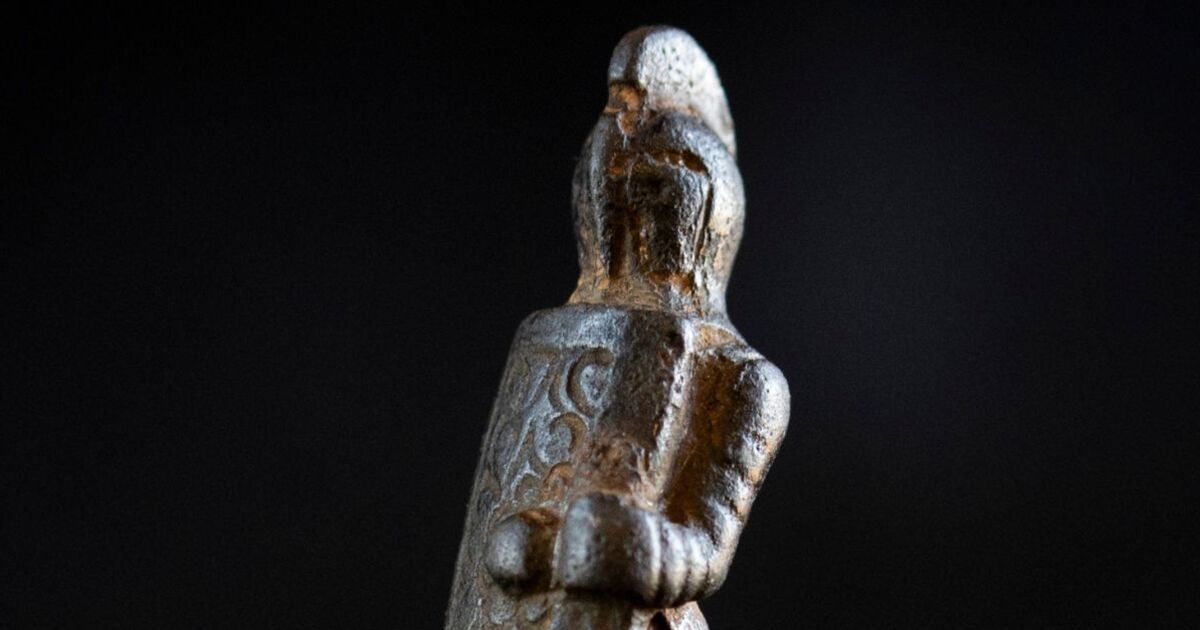A rare Roman knife handle was discovered in a river near Hadrian’s Wall in Northumberland, giving further proof to the existence of gladiators in the UK.
The handle crafted from copper alloy is intricately cast in the shape of a gladiator, complete with a sword, helmet, and shield — a distinctive and uncommon Roman souvenir in the UK.
This fascinating artifact was discovered in the river near Corbridge Roman Town, once a bustling Roman town.
Dr Frances McIntosh, English Heritage’s collections curator for Hadrian’s Wall and the North East, said: “It is rare to find a piece of gladiator memorabilia in Britain and to find such a well preserved and interesting piece is particularly remarkable.
“This beautifully made knife handle is a testament to how pervasive this celebrity culture was, reaching all the way to Hadrian’s Wall at the very edge of the Roman Empire.”
English Heritage plans to display the knife at Corbridge Roman Town in 2025, alongside other finds from the River Tyne.
The secutor figurine is left-handed, which would have been considered unlucky at the time, meaning it could represent a specific gladiator. Some were taught to fight left-handed, perhaps to gain advantage over their opponents.
McIntosh explained gladiators sometimes became celebrities while being enslaved, inspiring the creation of memorabilia, such as decorated ceramics and glass cups, and figurines.
English Heritage’s extensive national collection showcases other discoveries, such as a Samian bowl found at Richborough Roman Fort and Amphitheatre in Kent, which depicts various fight scenes.
One scene shows a gladiator standing with arm and shield aloft with their defeated opponent kneeling before them.
The collection also includes glass vials, found at Wroxeter Roman City in Shropshire and Aldborough Roman Site in Yorkshire, which would have held perfume and saffron-infused water to sprinkle on spectators.
A piece of glass painted with a leopard was also found at Corbridge, and after analysis, it’s thought to depict part of an animal hunt, known as a venatio, which was a key element of the Roman games alongside gladiator fights.












